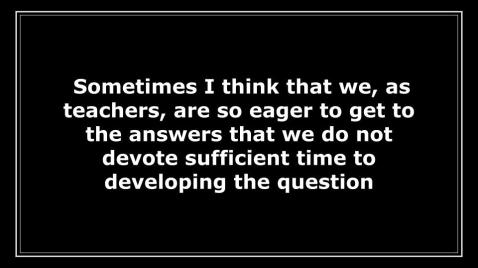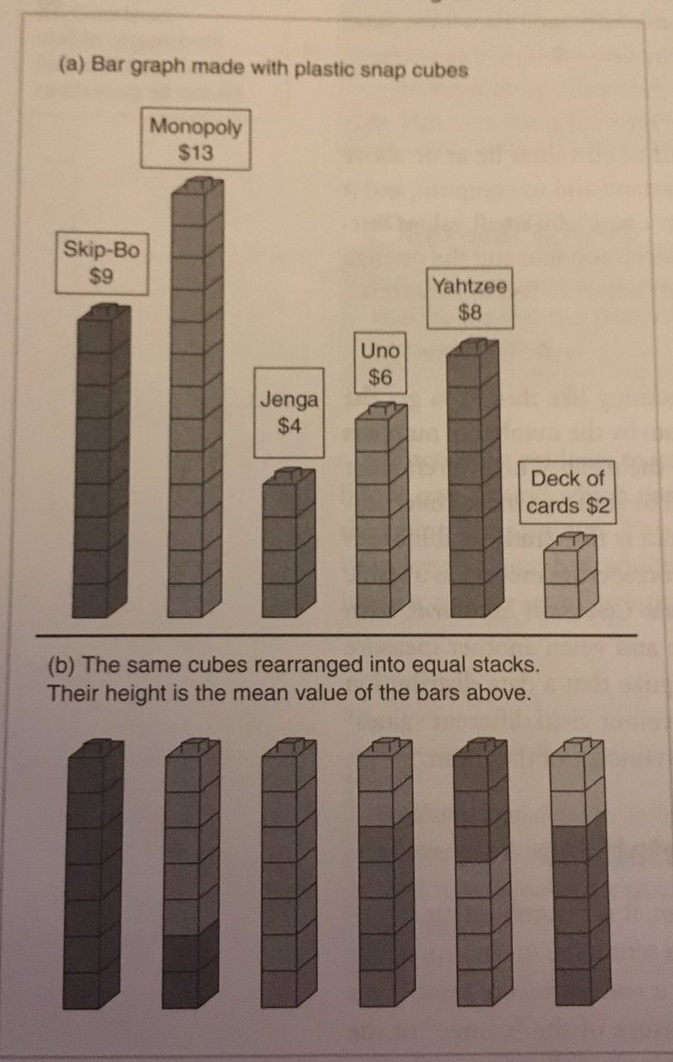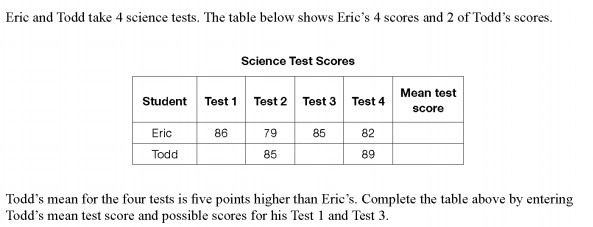
I think Willingham is onto something here. We have all become educators because we want our students to be successful… and we want to do our best to help them do well. However, we are often so eager to get the results we want, that we don’t take enough time to allow our students to think… to explore… to make sense of the math… to realize WHY we are learning what we are learning. In our eagerness to have our students get answers, we often miss the developmental pieces that our students need to be successful!
Dan Meyer gave us a nice little list of reminders that might help us allow our students more time to “develop the question” and student thinking here:

For me though, I think all of this can boil down to 3 simple beliefs:

- We want our students to understand concepts (the why) first. Thinking through concepts, making things make sense first helps build procedural knowledge. Making sure my students have both conceptual understanding and procedural fluency is important to me, but I believe that the concepts need time to develop. Jumping to procedures too quickly stunts concept development.
- We understand things at the visual level first. All students can enter the conversation when we ask them to use visual clues first. Starting with symbols, on the other hand (numbers, operation signs, formulas…), might disconnect the mathematics from what makes sense for many of our students.
- We want our students to be able to develop reasoning skills! Spatial reasoning, algebraic reasoning, proportional reasoning… understanding mathematics is all about being able to THINK mathematically. If we want our students to have the ability to reason, we need to start with tasks that help them develop their reasoning strategies. “Answer Getting” strategies are helpful when we want 1 specific way to answer 1 specific type of question. However, if we start here, our students will come to see mathematics as a series of unrelated things to memorize. More often then not, students who are taught “answer getting” strategies first lack the ability to translate their original strategies to new situations.
The 3 items on the left are about understanding… thinking… making the math make sense… while the 3 on the right focus on being able to do the skills of math. Personally, I believe that concepts, visuals, reasoning are more important for our students to develop, however, I understand that not everyone would agree with me here.
If you do think that procedures or symbols or “answer getting” strategies are more important, then I think the best way to help ALL of our students to get there, is to focus on concepts, visuals, reasoning. Slow down and make sure OUR STUDENTS are making sense of things before WE jump into symbols, procedures and strategies.
Let’s take a look at a quick example:
Mean:
If we are to start learning about the “mean” of a set of data, how do we introduce it? Instead of starting with a procedure or “answer getting strategy” (add them up and divide by the number of items), we need to think about how our students can make sense of the math using what they already understand. What visual could we introduce that would help our students use their reasoning skills to develop a conceptual understanding of “mean”? How about this:

On average, how many books does Maria read per month? 1, 2, 3, 4, 5, 6…?
If our students have never thought about “average” before, what might they do here? How might their visual / spatial reasoning help them make this make sense? Hopefully, we might notice that January could be redistributed onto other months. How might students see this happening?
Or…
Maybe we offer students opportunities to problem solve with manipulatives. Offer everyone Snap Cubes and post this problem:
What would the price be if each of the games cost the same amount?

Understanding this would help us understand 1 interpretation of how we can conceptualize “mean”. However, other students might think about mean more like a statistician might by thinking about the “balance point”. Take a look:

In the end, we need all of our students to be able to make sense of problems like this one:

How would you solve this problem? Is there more than 1 way to calculate the mean? Do I need to calculate the mean first? How did you determine the test scores for Todd?
If we were to focus on mean conceptually, we would likely have students who understood the procedures in ways that they are ready to use them in different ways… If we focused on visuals we would likely have students who could mentally reason these numbers on a number line… If we focused on reasoning, we would likely have students who were ready to adapt because they were used to making sense of things…
I leave you again with Willingham’s quote:

How do you help your students make connections between visuals and concepts… between various representations and symbols… between and among different but related concepts… between concepts and procedures… between reasoning and answer getting strategies?
When we help orchestrate situations where our students make these connections, we are building mathematical thinkers… we are building mathematicians!
So agree with you on this. It’s the mathematical understanding goal vs. the performance goal. I think the performance goal comes into play as a result of understanding the mathematics as you said. Ryan described the mathematical goal as, “What do you want your students to understand about math?” Performance goal is what they need to DO. Thank you for writing this post! I think it will be very helpful to many!
LikeLiked by 1 person
Hello! This post was recommended for The Best of the Math Teacher Blogs 2016: a collection of people’s favorite blog posts of the year. We would like to publish an edited volume of the posts at the end of the year and use the money raised toward a scholarship for TMC. Please let us know by responding via http://goo.gl/forms/LLURZ4GOsQ whether or not you grant us permission to include your post. Thank you, Tina and Lani.
LikeLiked by 1 person
Thanks for the opportunity. I’d love to share ideas and bring conversation about our beliefs and how that translates into action any way possible.
LikeLike
Great post!
What does it mean to be good at mathematics?
The answer to this question will impact how you read this post, how you teach and what your daily goals are for your students.
I’ve been thinking a lot about how to measure what we value. It’s difficult to measure reasoning, understanding and thinking. It’s much simpler to measure what students can or can’t do. It’s the same for teaching it. Much easier to teach how to do math than how to learn math by thinking or how well we’re doing that as teachers.
The difference is that one view has short-sighted goals of success on tasks while the other has goals of reasoning, understanding, problem solving, confidence and others that have long-term goals that are beneficial for society and which also give us short-term success but which might take more time to make happen.
Your average examples tell the perfect story. How can we visualize all mathematics concepts to help students make sense of math so that they can reason through any new problem they run into, even if they’ve never seen it before!
Thanks for writing this Mark. Great to see in writing something that captures my own beliefs so well.
As an aside, in reading our language curriculum and comparing it to our mathematics curriculum, I noticed some significant differences in pedagogy which might account for why we sometimes find it difficult to believe that this is the best way to teach mathematics!
LikeLiked by 1 person
I agree so much that it is both easier to teach and easier to assess procedures. That is why it is so hard to move experienced teachers away from this practice. I agree with the goal of developing mathematicians, and sometimes I’m still not sure how to do it, because I’ve been teaching procedures for so long.
LikeLiked by 1 person